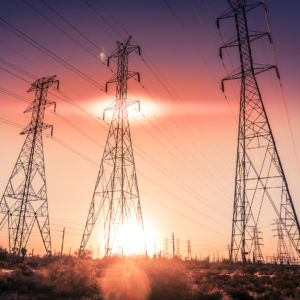With his presidential executive order on Promoting Energy Independence and Economic Growth, President Trump took an important first step to restore balance in environmental regulatory policymaking through his order that the Environmental Protection Agency review and withdraw the Clean Power Plan. In its stated purpose, the executive order calls for environmental regulations that “comply with the law, (and) are of greater benefit than cost.”
This balance is not new policy, but dates back to the original legislative intent when federal environmental laws were first adopted. During his 1971 testimony in support of passage of the Clean Air Act, Ralph Nader testified that to “simply enforce the pollution laws” without examining the “problem of environmental layoffs or closedowns” “would be too narrow a policy and a cruel one at that for workers” and could lead to a “regime of fear and economic insecurity … spread(ing) through the blue-collar labor force.”
Nader’s concern became a reality with the EPA’s adoption in 2015 of the CPP — largely considered the most sweeping regulation in EPA history. The CPP mandated overhaul of competitive electricity production in the United States by imposing aggressive new standards on power plants and prioritizing carbon content over affordability, reliability and safety. Under the premise of climate change, former President Obama sought to impose a regulatory burden that would have resulted in punishing costs to the poor and working class without achieving any substantive benefit addressing worldwide temperatures.
Using the EPA’s own data, the most optimistically calculated returns the CPP was predicted to deliver were a 0.01 degree Celsius decrease in global temperature by 2100 and a reduction of global sea level rise by 0.01 of an inch — less than the thickness of three sheets of paper. In her testimony before Congress, former EPA administrator Gina McCarthy sought to justify the CPP as “enormous benefit in showing sort of domestic leadership.” The EPA’s uplifting of symbolism over real impact isn’t new. A year earlier, confronted with the “one-one hundredth of a degree” benefit from the CPP, McCarthy responded in saying that “the value of this rule is not measured in that way (by temperature data). It is measured in showing strong domestic action which can actually trigger global action.” The executive order recognizes that environmental regulatory policymaking should accomplish much more than mere symbolic gestures.
These anemic returns are in sharp contrast to the projected annual $29 billion regulatory cost for the CPP. In Texas alone, the Electric Reliability Council of Texas estimated that the CPP would increase energy costs for consumers by up to 16 percent by 2030. These additional costs would hurt some more than others — increases in energy prices are disparately burdensome on the poor.
On average, low-income households spend more than three times the percentage of their income on electricity, heating and cooling than higher-income families do. And it doesn’t stop there. Energy price and availability are directly tied to human health and welfare. According to a 2011 survey of low-income households, high energy bills saw 24 percent of households go without food for a day, 37 percent went without medical or dental care, and 19 percent had a member become sick due to lack of heating in the home.
A 2015 National Black Chamber of Commerce study estimated that the increase in electricity rates caused by the CPP would severely affect “low-income groups, blacks and Hispanics,” and would cost U.S. consumers $284 billion more for energy in 2020 than they did in 2012. Household electricity prices under the rule would rise an average of $1,652, or about $240 more per year.
Besides failing to deliver meaningful improvement in environmental quality, the CPP failed as a policy because of the cost of the regulatory burden not only on the economy as a whole but upon each individual American. Access to reliable, affordable electricity in today’s society is a necessity, not a luxury. Across the world, primitive energy systems still shackle 1.3 billion people to crushing poverty. Clean, stable power and electricity, delivered at scale and on demand is fundamental to human thriving.
The president’s executive order recognizes that the foundation of good environmental regulatory policymaking requires finding the balance between substantive benefit and cost. The order protects against the Clean Power Plan’s radical regulations for the purpose of a merely symbolic gesture — a gesture that would have left little benefits, punitive harm and forgotten Americans in its wake.

